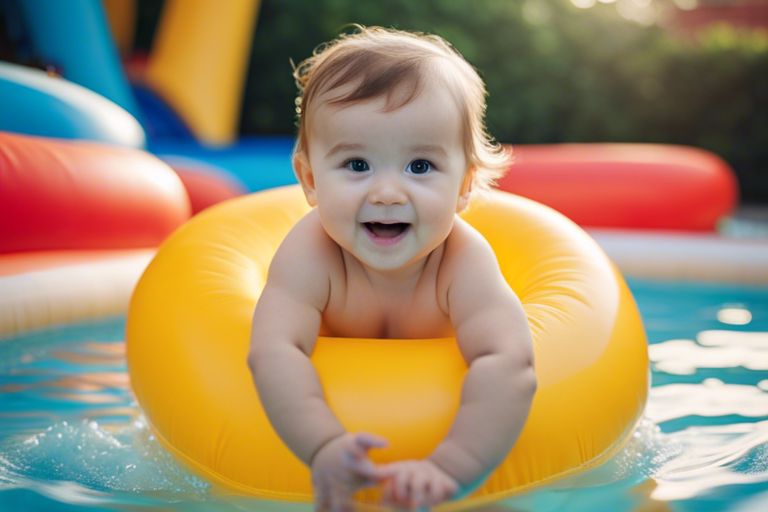Most aquatic enthusiasts are aware of the cardiovascular benefits of swimming, but what about adding fins to the mix? The debate on whether swimming with fins can help burn more calories has been a topic of interest among fitness enthusiasts. In this informative post, we will probe into the science behind swimming with fins and its impact on calorie burn. So, grab your goggles and let’s explore this calorie-burning discussion!

Key Takeaways:
- Fins can increase calorie burn: Swimming with fins can amp up your calorie burn because they provide extra resistance in the water, requiring more effort and thus burning more calories.
- Engaging more muscles: Fins can help engage muscles in your legs and core that may not get as much of a workout during regular swimming, resulting in a more comprehensive calorie-burning session.
- Intensity matters: While fins can potentially increase calorie burn, the actual number of calories burned will depend on factors like your swimming speed, duration, and overall intensity of the workout.

The Science Behind Swimming with Fins
How Fins Affect Your Stroke
The use of fins in swimming can significantly impact your stroke technique. Fins add propulsion to your kicks, allowing you to move through the water with more power and speed. They also help improve your body position, as the added surface area creates more lift, keeping your legs higher in the water. This can lead to a more streamlined and efficient stroke.
The Role of Resistance in Calorie Burn
One key factor in burning more calories while swimming with fins is the added resistance they create. As you move against the resistance of the water with the added surface area of the fins, your muscles have to work harder, leading to increased energy expenditure. This higher level of effort can translate to more calories burned during your swim session.
Calories burned during exercise are influenced by various factors such as intensity, duration, and individual differences in metabolism. When swimming with fins, the resistance provided by the water forces your muscles to work harder, resulting in a higher calorie burn compared to swimming without fins. This increased effort can contribute to a more effective workout and potentially greater calorie expenditure.

Caloric Expenditure with Fins
Comparative Study: Fins vs. No Fins
On average, swimming with fins can increase your caloric expenditure compared to swimming without fins. Fins provide more resistance in the water, requiring you to work harder and thus burning more calories. In a study comparing the two, participants burned approximately 10-20% more calories when using fins during their swim sessions.
| Swimming | Calories Burned |
| With Fins | Increased by 10-20% |
| No Fins | Regular Caloric Expenditure |
The Impact of Fin Type on Calorie Burn
One factor that can influence the number of calories burned while swimming with fins is the type of fins used. Short fins typically provide less resistance and may not increase caloric expenditure significantly, while longer fins that require more effort to kick can result in a higher calorie burn. It’s vital to choose fins that match your fitness level and goals to maximize the calorie-burning benefits.
Study: Research has shown that using long blade fins during a swim workout can increase calorie expenditure by up to 30% compared to swimming without fins. The added propulsion and resistance from the longer fins force your muscles to work harder, leading to a more intense workout and higher calorie burn.
Factors Influencing Caloric Burn with Fins
Once again, several factors play a role in determining the caloric burn while swimming with fins. These factors can influence the efficiency of your workout and the number of calories you burn during your swim. Let’s explore some key factors below:
Swimming Technique and Efficiency
Burn more calories with proper swimming technique. Efficient strokes and kicks can help maximize the energy you expend during your swim. Focusing on form and body position can also improve your overall workout intensity.
Water Conditions and Temperature
| Water Conditions | Temperature |
| Choppy waters or currents can make swimming more challenging, leading to increased calorie burn. | Swimming in colder water may cause your body to work harder to maintain its core temperature, resulting in higher calorie expenditure. |
With water conditions and temperature playing a significant role, it’s necessary to consider how these factors can impact your caloric burn while swimming with fins.
Fins
With respect to swimming with fins, the added resistance and propulsion can enhance your workout intensity. Fins can help you move through the water with greater speed and efficiency, leading to a higher calorie burn compared to swimming without fins.
Conclusion
Hence, while swimming with fins may not necessarily burn more calories than swimming without fins, it can still be a beneficial addition to your workout routine. Fins can help improve your technique, increase resistance, and provide a more challenging workout. Ultimately, the key to burning more calories lies in maintaining a consistent and vigorous swimming regimen, fins or no fins.
FAQ
Q: Does swimming with fins burn more calories than regular swimming?
A: Swimming with fins can help you burn more calories than regular swimming. Fins add resistance to your movements, which means your muscles have to work harder. This increased effort leads to a higher calorie burn compared to swimming without fins.
Q: What are the benefits of swimming with fins for calorie burning?
A: Swimming with fins can increase the intensity of your workout, leading to a greater calorie burn. Fins also help improve your cardiovascular fitness and strengthen your leg muscles. Additionally, using fins can enhance your overall swimming technique and efficiency, making your workout more effective.
How should I incorporate swimming with fins into my fitness routine to maximize calorie burning?
A: To maximize calorie burning when swimming with fins, you can include fin workouts in your regular swimming routine. Start by incorporating fin swimming into your routine a few times a week, gradually increasing the duration and intensity of your fin workouts. Remember to listen to your body and adjust the intensity to suit your fitness level.



